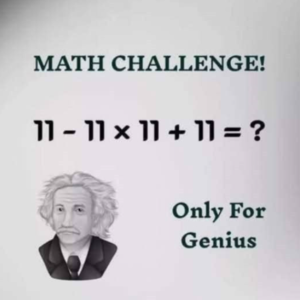Try Solving It Without a Calculator — Use Your Mind
In today’s world, where technology is at our fingertips, we’ve grown comfortable—perhaps too comfortable—relying on devices to do the thinking for us. Whether it’s a calculator, smartphone, or computer, these tools can provide answers in seconds. But what happens when we set those aside and dare to challenge ourselves? What happens when we rely solely on our minds to tackle a problem?
Imagine sitting at a desk, pencil in hand, staring at a math problem. Maybe it’s a long division, a fraction to simplify, or a tricky percentage. The temptation might be strong: Just reach for the calculator, get the answer, and move on. But today, you decide otherwise. Today, you choose to trust in the one tool more powerful than any machine—the human mind.
The Power of Estimation
The first step in solving any numerical problem without a calculator is estimation. Estimation isn’t about getting the exact number on the first try—it’s about getting a feel for the range where your answer should fall.
Let’s say you’re asked: What is 437 divided by 9?
Without touching a calculator, your brain begins to break it down:
-
You know that 9 times 50 is 450—that’s a bit too high.
-
You know that 9 times 48 is 432—that’s very close.
So, 437 divided by 9 is a little more than 48. Maybe 48.5 or 48.6. With just basic multiplication facts and reasoning, you’ve narrowed down your answer without ever pressing a button.
Breaking Down Complex Problems
When facing a seemingly large or difficult problem, one effective strategy is breaking it into smaller, manageable parts.
Suppose the problem is: What’s 15% of 240?
You don’t need to panic or reach for your phone. Instead, think:
-
10% of 240 is 24 (because 10% means divide by 10).
-
5% of 240 is half of 10%, so that’s 12.
-
Therefore, 15% of 240 is 24 + 12 = 36.
Done! No calculator needed—just logical steps and confidence in basic principles.
Training Your Mind
Every time you solve problems like this, you’re not just getting an answer—you’re sharpening your brain. Mental math strengthens memory, focus, and agility. It forces you to stay present, to analyze, and to problem-solve creatively.
Think about people who lived before calculators and computers. Merchants, architects, sailors, and builders all made complex calculations with nothing but their minds, paper, and perhaps an abacus or slide rule. Their survival, success, and progress depended on mental arithmetic, estimation, and logic. By practicing mental math today, we connect with that same tradition of thinkers who shaped the world with nothing but intellect and determination.
The Confidence That Builds
When you solve a tough problem in your head, the sense of satisfaction is unlike anything else. You didn’t rely on a machine; you relied on yourself. And every time you do that, you build confidence in your ability to tackle future challenges—not just in math, but in life.
Consider this: You’re at a store. The total comes to $17.85, and you hand over a $20 bill. Without waiting for the cashier or looking at the register, your mind instantly knows: I should get $2.15 back. That’s a small moment, but it demonstrates independence, awareness, and competence. You feel empowered because you trusted yourself and you were right.
Strategies for Mental Problem Solving
If you want to get better at solving problems without a calculator, here are some tips:
✅ Know your multiplication tables. They are the foundation of most mental math.
✅ Round and adjust. For example, if you’re trying to add 398 + 247, you might think: 400 + 247 = 647, then subtract 2 to get 645.
✅ Break down percentages. As shown earlier, think in terms of 10%, 5%, etc.
✅ Divide step by step. Instead of dividing large numbers at once, break them apart.
✅ Check with estimation. If you solve 783 ÷ 11 and your answer is 200, you’ll know something went wrong because 11 × 200 is 2200. Estimation catches errors.
✅ Practice daily. Make mental math a game. When you see numbers, play with them. What’s half of this? What’s 10%? How would I divide that?
The Joy of the Process
Often, we get so focused on the answer that we forget to enjoy the process of getting there. Solving a problem without a calculator reminds us that the journey—the thinking, analyzing, and figuring out—is just as rewarding as the solution. Each step trains the mind to be more nimble, more curious, more resilient.
When the Mind Triumphs
Let’s imagine you’re faced with this problem: Find 75% of 320.
You pause. 75% is the same as ¾. So, take 320 ÷ 4 = 80. Then 80 × 3 = 240. There it is—75% of 320 is 240. That sense of accomplishment? It’s yours. And it’s far more satisfying than simply pressing buttons.
Beyond Numbers
The discipline of solving problems in your head builds skills that extend beyond math. It improves concentration, patience, and critical thinking. It teaches you to slow down, analyze, and break complex tasks into simple parts. These are life skills, not just math skills.
In a world that rushes toward easy answers, daring to think for yourself is powerful. It’s a way of saying, I trust my mind. I value the process. I am capable.
So next time you face a problem—whether it’s figuring out a tip at a restaurant, dividing a bill among friends, or calculating distances on a road trip—pause. Take a breath. And challenge yourself: Try solving it without a calculator. Use your mind.
You might surprise yourself with just how much you can achieve with nothing but your own brilliant thinking.
